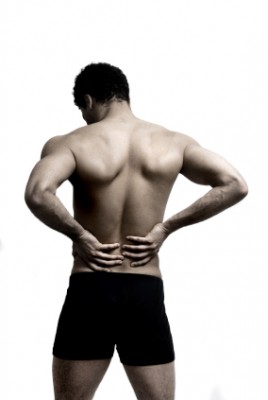 Pain sucks. When we get injured or sore or uncomfortable, we instinctually try to fix it. We reach into our medicine cabinets, pop some pills, and “get back out there.” But are we really doing ourselves a service? Can we actually be inadvertently putting ourselves at risk? Turns out, maybe so.
Pain sucks. When we get injured or sore or uncomfortable, we instinctually try to fix it. We reach into our medicine cabinets, pop some pills, and “get back out there.” But are we really doing ourselves a service? Can we actually be inadvertently putting ourselves at risk? Turns out, maybe so.
Non-steroidal anti-inflammatory drugs (NSAIDs), which include ibuprofen (Motrin, Advil), naproxen (Aleve), celecoxib (Celebrex) and a ton of others, are available over-the-counter and are widely used by the general population for, well, everything. Studies have found a disproportionately high use of NSAIDs amongst athletes, particularly elite athletes, as well as a lack of awareness of key dangerous side effects.
Standard care in medical practice is to discourage prophylactic use (taking medications in advance of preventing a problem, as opposed to treating an existing problem) of NSAIDs. But what about NSAID use after injuries? NSAIDs have traditionally been part of hallmark treatment, particularly for facilitating an early return to activity. But there is a controversy in sports medicine about whether NSAID use in the first few days after acute sports injuries can actually compromise the healing process. Let”™s examine how that might be so.
HOW DO NSAIDs WORK?
NSAIDs have anti-inflammatory and analgesic (pain-relieving) effects by inhibiting an enzyme called cyclooxygenase (COX), which is responsible for catalyzing the formation of inflammatory signaling molecules called prostaglandins.
HOW MIGHT NSAIDs INHIBIT MUSCULAR HEALING?
As per my previous article about the medical consequences of overexercising/overtraining, the first step in muscular repair is actually inflammation. Inflammatory cells flock to the site of injury, release pro-inflammatory signaling molecules called cytokines to recruit a whole slew of other inflammatory cells. It”™s a big inflammatory cell party. After this inflammatory stage concludes, only then can new cells start to lay down new collagen fibers to repair tissue strength.
New research, beginning in animal models, suggests that use of NSAIDs in the first few (3-5 days) of acute injury actually PREVENT this inflammatory stage from occuring — and thus compromise the later repair phase. This may be why we see so many recurrent injuries in athletes who pop NSAIDs to cope with their discomfort (or, worse, attempt to prevent discomfort in the first place).
Prophylactic use of NSAIDs certainly makes people feel less discomfort. But can it contribute to injury? As it turns out, yes. Athletes who take NSAIDs regularly before training/competing in hopes to prevent discomfort may inadvertently be predisposing themselves to future injury by reducing tissue adaptation to loads (again, see my overtraining article for a description about how muscle strength is built through the process of creating microtears via overloading the muscle fiber). Prolonged use of NSAIDs can delay healing. Standard medical care is to discourage prophylactic use of NSAIDs.
Not all injuries require inflammation to be shut down. A nerve impingement or a swollen, leaky knee is very different than muscle pain. (NSAIDs may indeed block the pain (because of their analgesic effects) but may not actually contribute much value-added towards the actual problem.
WHY ELSE MIGHT WE WANT TO AVOID NSAIDs WHEN POSSIBLE?
Beyond the gastrointestinal complications (i.e., nausea, diarrhea, and increased risk of ulcers) that tend to make their way to the public knowledge base, NSAIDs are known to exacerbate asthma, and possibly cause serious cardiac and (not uncommonly) kidney problems. If I have learned anything in my medical school training thus far, it is this: Do NOT mess with the kidney unless you really, really, REALLY have to.
WHAT MIGHT WE DO INSTEAD?
Ice, compression, and elevation are ideal treatment mechanisms for acute injuries. If pain is intolerable and prohibits routine life functioning and/or sleeping, first try a non-NSAID like acetaminophen (Tylenol), an analgesic without anti-inflammatory properties (in the absence of a relevant pre-existing medical condition like liver disease). If signs of inflammation persist after 3-5 days (when the initial phase of muscular healing is complete), NSAIDs are appropriate for no longer than 1 week.
Early mobilization is key. After taking 1-2 days of rest, a return to light, easy movement is helpful to healing, not harmful. Movement should not cause pain.
Recently, at a sports medicine workshop I attended, one of the primary care doctors said it best: “When you get a sports injury, it”™s going to hurt. You”™re going to be sore. You”™re going to be uncomfortable. It”™s going to suck. There”™s no quick fix. You want to pop a pill and ‘make it all go away”™ — but you can”™t. You”™re going to need to go through the process of getting yourself moving, stretching, strengthening — and of being uncomfortable. If you can”™t suck it up and be uncomfortable in the short-term, you may be asking for real problems in the long-term.”
[Note: to download a pdf of this article complete with references, click here]
Melissa Marotta
MS-II, University of Vermont College of Medicine
STAR 3 Spinning Instructor
Certified Personal Trainer, American Council on Exercise
- Options for Online Indoor Cycling CEC's - February 15, 2025
- Help Wanted – Emerging women's cycling apparel brand hiring reps - January 1, 2025
- It's never too early for Christmas Shopping - November 20, 2024
